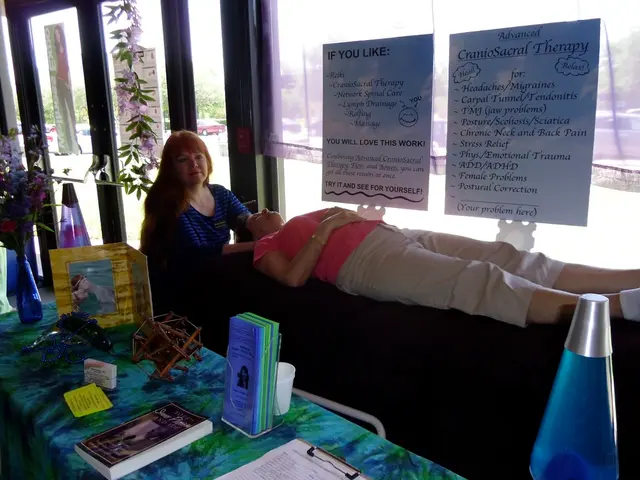Strengthening Academic Programs via Collaborative Relationships between Teachers and Students
Faculty-student partnerships in higher education are collaborative relationships that enhance the learning experience and drive academic success. These partnerships offer significant benefits such as enhanced student success, improved mental health and well-being, enriched academic experiences, and the fostering of a supportive community.
Enhanced Student Success and Employability
Partnerships provide students with practical learning experiences, mentorship, and networking opportunities that improve their academic and career outcomes. Faculty involvement in internships, career advising, and co-op programs helps students gain industry-relevant skills and better prepare for the workforce [1][3].
Improved Student Mental Health and Well-being
Faculty who build strong relationships with students help them feel supported academically and personally. Participation in student organizations, mental health clubs, and affinity groups with faculty advisors fosters community, safety, and belonging on campus, which is crucial during transformative college years [5].
Collaborative Teaching and Learning Culture
Faculty partnerships with students encourage collaborative learning environments and shared responsibility for educational improvement. Faculty development initiatives aimed at instructional excellence can catalyse a culture of continuous improvement and inclusivity in teaching and learning [4].
Research and Innovation
Faculty-student collaborations often extend to research projects, contributing to knowledge creation and sometimes leading to commercialization opportunities. International faculty and student exchanges further broaden academic perspectives and research capabilities [2].
Models of Faculty-Student Partnerships
Advisory and Mentorship Roles
Faculty serve as advisors to student groups, mental health peer supporters, or co-curricular activities, providing guidance and validation in both academic and personal aspects of student life [5].
Co-Creation of Learning Experiences
Faculty and students collaborate to co-design curriculum elements, co-teach, or co-develop projects that align academic learning with real-world applications. This model increases engagement and relevance [3].
Faculty and Student Exchange Programs
International and domestic exchange programs involving faculty and students help build global competencies and shared educational outcomes across institutions [2].
Ongoing Industry Partnerships Involving Faculty and Students
Institutions may designate coordinators to manage long-term partnerships where faculty and students engage directly with employers for internships, research projects, and workforce development [1][3].
Cultivating a Culture that Promotes Faculty-Student Collaboration
Systematic Faculty Development
Invest in ongoing training for faculty focusing on mentorship, inclusive teaching, mental health awareness, and collaborative pedagogies. This helps faculty build skills and mindset needed for effective partnership with students [4][5].
Institutional Structures and Roles
Create dedicated roles, such as industry engagement coordinators or faculty liaisons for student organizations, to facilitate consistent communication, relationship maintenance, and feedback loops between faculty, students, and external partners [3].
Recognizing and Rewarding Collaboration
Celebrate contributions through awards, public acknowledgments, and formal recognition programs that highlight exemplary faculty, students, and partners engaged in collaborative efforts [3].
Supporting Student Engagement Spaces
Encourage faculty involvement in student affinity groups, mental health initiatives, and organizations to build trust, community, and safe spaces for dialogue and support [5].
Aligning Academic Goals with Partnerships
Co-design programs and learning outcomes with input from faculty, students, and employers, ensuring academic relevance and responsiveness to evolving workforce needs [1][3].
By integrating these elements, higher education institutions can foster sustainable, mutually beneficial faculty-student partnerships that support student success, enrich academic culture, and prepare graduates for a dynamic global workforce. These partnerships reflect a progressive shift towards inclusivity and engagement in academia, strengthening learning outcomes and preparing students for real-world challenges. The aim is to foster a shared commitment to education that benefits both parties.
[1] Association of American Colleges and Universities (2015) The Essential Learning Outcomes for College Students. Washington, D.C.: AAC&U.
[2] Carnegie Foundation for the Advancement of Teaching (2015) Education and the Workforce: A Call to Action. Stanford, CA: Carnegie Foundation.
[3] National Association of Colleges and Employers (2019) Job Outlook 2019: First Look. Bethlehem, PA: NACE.
[4] National Center for Education Statistics (2018) The Condition of Education 2018: The State of Student Success. Washington, D.C.: U.S. Department of Education.
[5] National Institute of Mental Health (2018) Mental Health and College Students: What Parents Need to Know. Bethesda, MD: NIMH.
Professional Development through Collaborative Learning
Faculty-student collaboration in co-teaching and co-designing curriculum elements can provide opportunities for faculty members to expand their instructional skills and pedagogies, contributing to their professional development and academic excellence [4]. This collaborative approach, in turn, enhances the overall learning experience for students [1].
E-Learning and Self-Development
Partnerships between faculty and students might also involve collaborative research projects, some of which may include the creation of educational resources or the development of e-learning modules. These experiences allow faculty and students to practice design thinking and innovation, fostering self-development in the areas of content creation, instructional technology, and project management [3].




